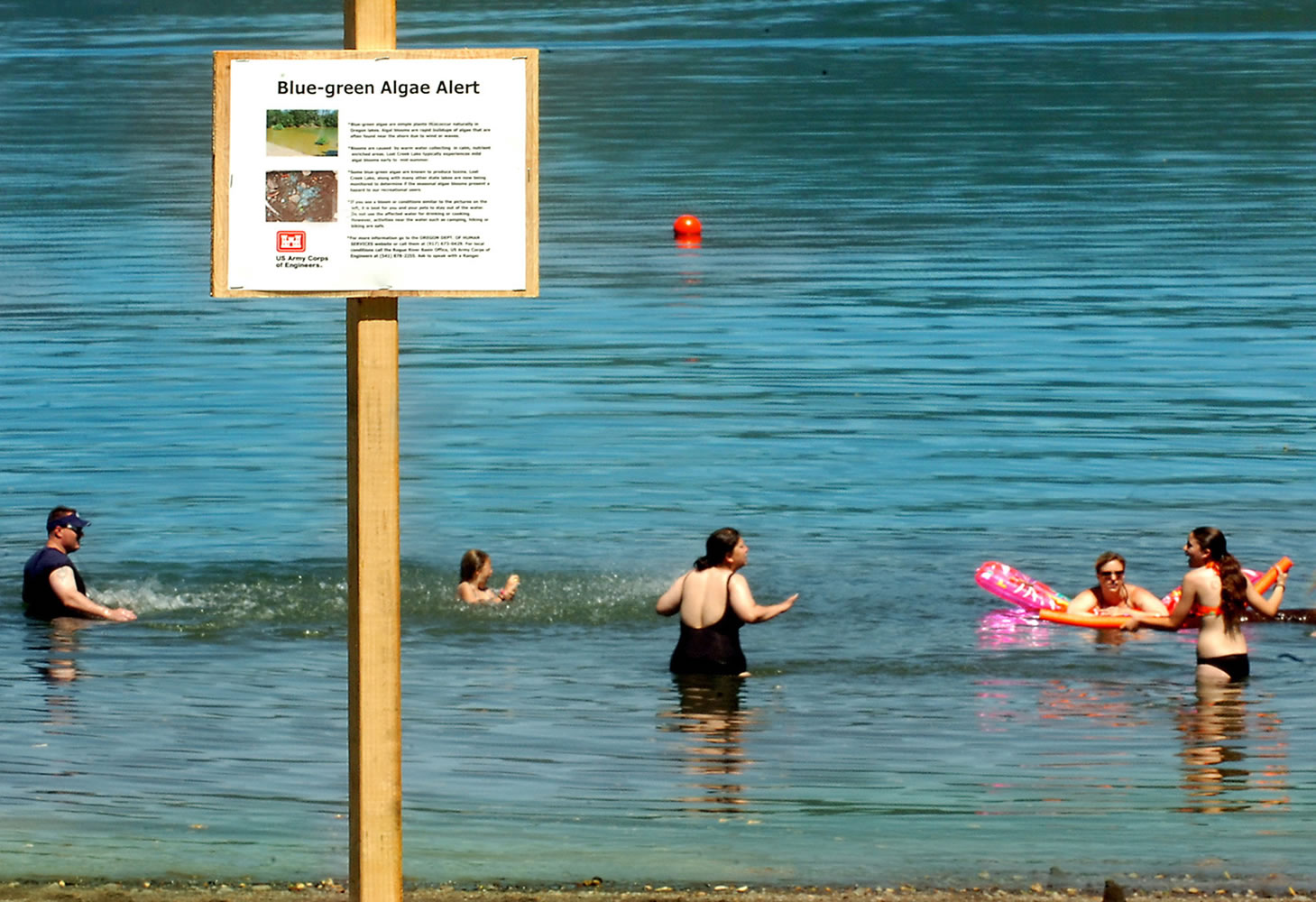Pollution and climate change may be making freshwater algae blooms more toxic, according to a Northwest scientist’s newly published analysis.
Oregon State University researcher Tim Otten’s article in the journal Science concludes that fertilizer pollution, wastewater, and a warming climate are fueling the growth of huge mats of green scum in lakes and reservoirs.
“For instance in Lake Erie, it’s been plagued with toxic blooms that are so large you can see them from outer space,” he said.
Algae can pose a risk to drinking water because some species, notably cyanobacteria or blue-green algae, release powerful liver toxins and nerve toxins. A toxin called microsystin is particularly common.
Otten’s Science analysis suggests that microsystin helps the algae protect itself from cell damage that can occur when reactive forms of oxygen develop in the water. The protective effect gives toxic cyanobacteria a competitive advantage over nontoxic algae.
Cyanobacteria have been around for more than 2 billion years and Otten says scientists had long puzzled over why blue-green algae produce toxins.
Other scientists have observed that increased nutrient and fertilizer runoff and warming temperatures may spur the growth of harmful species of marine algae in the Northwest, including a species that can cause diarrhetic shellfish poisoning. Not all algae species are harmful, and the only way to know for sure if a bloom is toxic is to test the water. However, the Environmental Protection Agency doesn’t require states to monitor freshwater for algae toxins.
Toxic blooms have prompted public health alerts across the Northwest every summer, shutting down recreation sites like Green Lake and Lake Samammish in the Seattle area and affecting Dexter Reservoir, the source of drinking water for the community of Lowell, Ore. In Southern Oregon’s Klamath Basin, harmful algal blooms contribute to poor water quality that harms endangered suckerfish.
Washington state regularly monitors harmful algal blooms in both the freshwater and the marine environments, and in particular focuses on toxins that impact the state’s shellfish industry.



